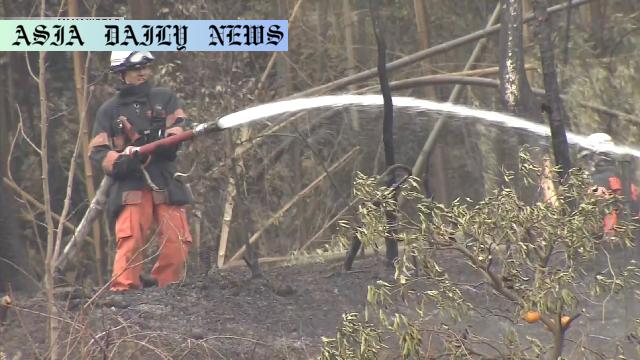Forest Fires: Forest fires in Ehime, Japan affect 6,000 residents with 417 hectares burned. Rain and wind expected to intensify.

Growing Forest Fires in Ehime, Japan
Forest fires have been raging across Ehime Prefecture in western Japan for five consecutive days. The disaster, initially starting in Imabari City, has now extended to neighboring regions such as Saijo City, causing alarm and widespread disruptions. As of Wednesday afternoon, the fires have destroyed an estimated 417 hectares. The ferocious flames have consumed multiple districts, including Gouzakurai, Nagasawa, Sakurai, and Asakura, leaving visible destruction with 11 homes and warehouses reportedly damaged.
Evacuations Affect Thousands of Residents
The fires prompted Imabari officials to issue evacuation orders affecting nearly 6,000 residents. The establishment of seven evacuation centers has provided temporary shelter to 77 individuals from 56 households. In nearby Saijo, additional welfare facilities are housing 123 users and staff. While many residents have managed to relocate temporarily, others remain stranded due to the rapid pace of the spreading fires.
Impact on Basic Services and Power Outages
The fires’ aftermath has resulted in the closure of local stores and the suspension of critical services such as post office operations in Imabari. Adding to the crisis, a regional power grid company has warned of imminent blackouts if the fires continue to expand. In response, emergency announcements have called for residents to prepare essential items, such as flashlights, charged mobile devices, and necessary provisions to endure potential outages.
Weather Conditions and Challenges Ahead
According to Japan’s Meteorological Agency, weather conditions remain precarious, with dry air dominating the area as of Thursday morning. Forecasts indicate the possibility of rain by Friday, which could aid firefighting efforts, but stronger winds might exacerbate the crisis. As helicopters from Japan’s Self-Defense Forces persist in their aerial firefighting missions, concerns about containing the fires continue to grow, highlighting the need for comprehensive evacuation preparedness and swift containment measures.
Community and Environmental Toll
The raging fires not only pose an active threat to human safety but also have devastating consequences for the region’s environment and wildlife. Destroyed habitats, toxic smoke, and increasing temperature levels are serious repercussions of prolonged burning. Addressing the aftermath will require unified efforts to rebuild infrastructure, restore power lines, and provide additional assistance to affected families.
Commentary
Impact of Forest Fires on Human Lives
The ongoing forest fires in Ehime Prefecture highlight the devastating impact of natural disasters on human lives. With over 6,000 residents displaced and multiple homes destroyed, the immediate safety of the affected population remains the top priority. Evacuation orders and emergency shelters are vital lifelines for those in the crisis zone. Yet, the number of evacuees in shelters appears alarmingly low, raising concerns about the well-being and safety of others who might still be stranded or reluctant to abandon their homes.
Long-term Infrastructure and Environmental Consequences
While the current crisis is centered on extinguishing the fires, the long-term challenges are equally concerning. Damage to critical infrastructure such as power grids could leave entire communities in the dark, hampering recovery efforts. Furthermore, widespread habitat destruction worsens environmental sustainability, and the accumulation of air pollution intensifies health risks for both residents and first responders. Proactive recovery plans will be imperative to mitigate the cascading effects of such disasters.
Lessons in Preparedness and Community Resilience
Events like these underline the importance of disaster preparedness. Natural disasters are an inevitable reality, and building resilient communities is the best way to counteract their effects. Local authorities must strengthen efforts to ensure residents are equipped with evacuation protocols, access to basic supplies, and up-to-date information. Collaborative action across stakeholders—from government agencies to the private sector—is essential for both immediate relief operations and long-term rebuilding processes.
A Need for Environmental and Policy Action
This catastrophe also serves as a wake-up call for greater environmental action. As global climate patterns evolve, such forest fires may become increasingly common, driven by prolonged dry spells and rising temperatures. Governments worldwide need robust policies to address climate change and its impacts to protect regions like Ehime from falling victim to recurrent environmental tragedies. Collective accountability, better forest management, and sustainable urban planning are crucial steps to ensure future safety.


